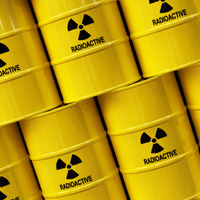
Evaluation Period: 2014-2020
Total Awarded: $100.8 million
Total Number of Grants/Investments: 228
Geographic Focus: Global
Background
Since 2015, the Nuclear Challenges Big Bet has sought to reduce global nuclear risk via ceased production and elimination of stockpiles of weapons usable material (W-UM). In response to significant challenges in the landscape, including the change in the U.S. Administration in 2017, the strategy aimed to reinforce investments related to protecting and strengthening the global nuclear regime, recognizing the growing risks to nuclear stability. To realize its goals, the Nuclear Challenges strategy has supported activities in dual pathways: (1) protect, stabilize, and strengthen the nuclear regime; and (2) assure safety and security across the fuel cycle, in processes related to production, storage, and disposal of W-UM. This combination of regime- and fuel cycle-focused efforts was believed to be necessary to realize the strategy’s end goal.
The Nuclear Challenges theory of change identifies three approaches: (1) develop and advance policy solutions, i.e., develop a fund of credible, viable, and innovative policy-relevant ideas and share these with governmental decision makers; (2) enhance relationships among key actors, i.e., via pursuit of opportunities for bilateral and multilateral dialogue that foster trust and goodwill; and (3) increase the capacity of actors in the nuclear field. These approaches are applied to five modules that represent critical countries and relationships, which are believed to play a significant role in the stability of the nuclear regime and advancement of ceased production and elimination of W-UM due to their existing weapons or W-UM stockpiles, and/or that address risks that potential proliferation poses to global nuclear security. The five modules and related components are: United States (U.S. Congress, U.S.-Russia, Fuel Cycle, and Weapons Policy components), Tough Cases (Iran and North Korea components), Possessor/Non-Possessor Tensions, Threshold Countries (Fuel Cycle and Weapons components), and Global Fuel Cycle.
The Nuclear Challenges strategy posited that the approaches, when applied to the five modules, will contribute to a more stable nuclear regime by 2025, in which the three core regime principles (disarmament, nonproliferation, and peaceful uses) are upheld, and there is widespread agreement and commitment by countries toward a negotiated W-UM agreement by 2030.
What We Evaluated
Since November 2017, ORS Impact has served as evaluation and learning partner to the Nuclear Challenges team. ORS’ evaluation focused on our Nuclear Challenges strategy and its specific, time-bound goals. The purpose of evaluation was to assess whether the strategy as articulated by the program team has contributed to progress towards a stabilized nuclear regime and a negotiated W-UM agreement within the timeframe set by the Big Bet. There were myriad evaluation inputs for the program team over the course of several years. This particular evaluation report served as one of several inputs for the program team and the Board in our strategy review process.
The report lays out substantive findings regarding outcomes and the external landscape that, together, present a picture of progress to date for the Nuclear Challenges strategy. The report sets out to answer three overarching questions:
- Does progress to date demonstrate momentum and provide a line of sight to the Big Bet goals of a more stable nuclear regime by 2025 and a negotiated W-UM agreement by 2030?
- Is the Nuclear Challenges theory of change valid and adequate to reach the intended Big Bet goals?
- Does the landscape suggest continued windows of opportunity for progress toward the goals in the Nuclear Challenges strategy and theory of change within the limited timeframe of the Big Bet?
To answer these questions, ORS employed a mixed method design to measure the status of and progress within module components and related to the strategy’s end goal. The synthesized results presented in this report reflect cross-module data, analysis, findings, and evidence which speak specifically to the Nuclear Challenges theory of change. This report presents the first synthesis of evaluation data about the Nuclear Challenges strategy.
Findings and evidence presented in this report are based on the specific time period in which data were collected, from May 2019 to June 2020. Given the dynamic nature of the field, there have since been further developments and continued evolution in the external landscape that have implications for the nuclear landscape and field.
Note: Evaluation efforts were not intended as an assessment of the wider nuclear field nor grantees’ efforts, generally. Broader interpretation or application of findings is a misuse of this report.
What We Learned
We drew the following conclusions from the findings of the synthesis report:
- The Nuclear Challenges strategy has been able to effect progress toward identified short-term outcomes across the dual pathways of the nuclear regime and fuel cycle.
- Grantees have produced a deep reservoir of credible solutions related to nonproliferation, disarmament, and peaceful use, and they have helped make the case for minimizing use and production of highly enriched uranium and plutonium.
- Grantees’ support for nuclear dialogue among key countries has been an important avenue for furthering bilateral and multilateral diplomatic approaches, despite challenges in key countries’ relations.
- Grantees took advantage of opportunity windows and contributed to discrete country-level policy actions that represent incremental progress toward W-UM minimization and nuclear risk reduction more broadly.
- The number of countries that possess weapons and the number of nuclear weapons held globally have not changed significantly during the strategy’s time period.
- Compared to the situation at the inception of the strategy in 2015, the nuclear regime is considerably weaker in 2020. This is in part due to weakening U.S. leadership, tensions in global relations, and reduced opportunities for civil society organizations’ influence within regular nuclear relations and diplomacy processes under the Trump administration.
- Overall, the assessment of the articulated Nuclear Challenges strategy established that there is not a clear line of sight to the existing theory of change’s intermediate and long-term outcomes in the Big Bet timeframe.
- Evidence from the evaluation lifted up potential opportunities for continued contributions to nuclear risk reduction, including: support to civil society organizations aiming to influence and bolster diplomacy and policy development; diversification across the field; development and advancement of frames for nuclear risk reduction besides deterrence theory; and exploration of the nexus between nuclear and climate-focused efforts.
Information about the Nuclear Challenges strategy can be found on the Nuclear Challenges strategy page.



